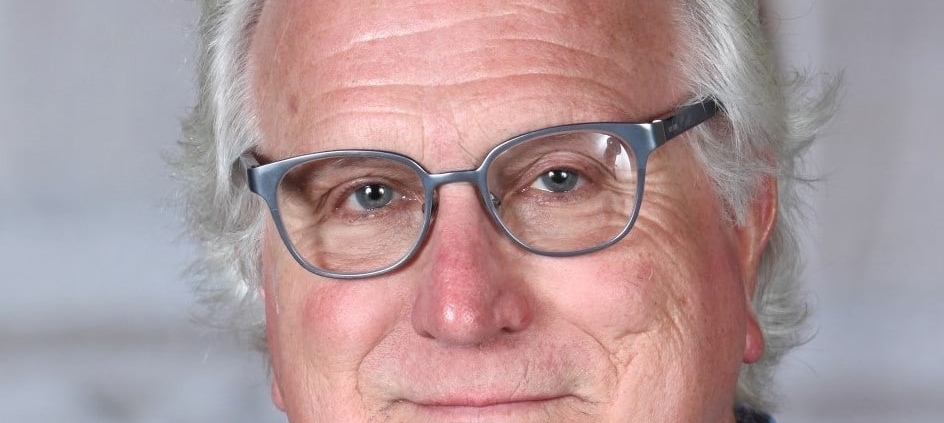How did American universities end up being seen as the best in the world?
My guest today, David Labaree, argues it was the very decentralized and autonomous structure of the higher education system that allowed universities to develop an entrepreneurial ethos that drove American higher education to become the best. Today, America’s universities and colleges produce the most scholarship, earn the most Nobel prizes, hold the largest endowments, and attract the most esteemed students and scholars from around the world
The messy structure of American higher education was not planned, however. There was no strong state or strong church directing the system from above. Rather higher education developed in a free market where survival was never guaranteed. Such a system produced unintended consequences that would make American higher education the envy of the world.
David Labaree is a professor of Education at Stanford University. His new book is A Perfect Mess: The unlikely ascendancy of American Higher Education, which was published by the University of Chicago Press earlier this year.
Citation: Labaree, David, interview with Will Brehm, FreshEd, 77, podcast audio, June 12, 2017. https://www.freshedpodcast.com/davidlabaree/
Transcript, Translation, and Resources:
Will Brehm 1:28
David Labaree, welcome to FreshEd.
David Labaree 1:30
Thanks, Will. It is a pleasure to be here.
Will Brehm 1:32
So, when did universities first appear in the United States?
David Labaree 1:36
They arrived very early, very early. Harvard College was founded in 1648, something like that. William & Mary was very close in at that time. There were something like 15 colleges in existence by the time of the revolution. And by the 1880’s, there were 800 colleges and universities. So, it started early and ramped up fast.
Will Brehm 2:06
And what was the original structure? What did universities look like? You know, in the beginning?
David Labaree 2:13
One thing I should, by the way, mention is that one of the oddities of American universities is that “college” and “university” are used interchangeably. In most of the rest of the world, they have very different meanings. “College” has a meaning more like a community college, let’s say, in the United States. So, I’m going to use the terms college and university either way, and it’s meaning the same institution. There is not much of a difference. So, the basic structure was these were not public universities in the sense we think of today. They were chartered by government, but they were not governed or funded by government. They were chartered in the same sense that any other corporation is chartered. And so, they were, what we would now call, a not-for-profit corporation with an independent board of trustees that would hire a president, who would then hire faculty and organize a college. They might get some funding from the state if they begged for it and were lucky. But more often than not, they were dependent on students for tuition, donations from local businesspeople who could serve on the board and serve as donors.
Will Brehm 3:30
And where were these colleges in the beginning? Were they primarily in cities like Boston where Harvard was, or were they in more rural parts of America as well?
David Labaree 3:40
Initially, they showed up where the population was. So, Harvard was in Cambridge, Penn was in Philadelphia, King’s College – later Columbia – was in New York. But the in the early 19th century, that changed dramatically, and the new colleges were popping up more and more in rural areas, often at the very edge of the frontier. As the frontier started moving west, colleges moved west with them.
Will Brehm 4:15
And why? Why were colleges getting set up in these really desolate areas?
David Labaree 4:21
Yes, it is an odd thing because you would say, “Well, wouldn’t you want to be near your customers?” That makes sense. And if they were interested, if that was their primary aim – was to serve a group of potential students – then they would want to stay near concentrations of population. But the rationale, the reasons for setting up colleges, was much more diffuse than that. And it often had very little to do with learning. One reason was you had in the US a large number of religious denominations that were in a very competitive position with each other. And each one wanted to establish its position as the frontier advanced. The Presbyterians, the Baptists, the Lutherans, the Catholics – they all wanted to plant the flag, put up a college, train clergy and provide a collegiate experience for their constituency. And they did not want the territory left to others. So, this is why, for example, today, Ohio has such a huge number of colleges; these small, independent colleges. Because that was the first real frontier for the US; that was the Northwest Territories. And so, every single denomination decided to jump in and put into college in Ohio. The other rationale, which was in many ways closely related, was even less uplifting as a reason. At least the religious denominations had some sense that what they were doing was advancing the faith. But for the most part, the real guiding principle, and the spur for setting up a college in most of these little dusty agricultural towns on the frontier, was as a way to sell land. One of the big problems of American history that is run through from the beginning to the present is there was too much land and there were not enough buyers. The government was giving land away. What are you supposed to do? You are in the frontier; you have got a bunch of land that you have accumulated. And, how do you convince somebody it is worth buying here instead of somewhere else? So, one key way of doing that was education. Developers would set up a little school and say, “Hey, you can raise a family here” and so, “this looks like a real civilized place, so why not buy here?” Even better, put up a college. “We’re not just a little town, a little depot for farmers. No, we’re a cultural center, we’re a center of high learning.” And so, this makes us a much more impressive destination than some other place that looks like it is also in the middle of nowhere but has no pretensions about being a great place to live. So frequently you find these. The basic approach was you would get some developer or a group of developers that would take a piece of land of their own. They would build a little building on it and call it a college. They would go out and try to get a charter and then they would go east and find a religious denomination that wanted to sponsor it. And then they would go out and hustle to try to get other people to contribute to this and that. And then they would set it up, hire a president, and start looking for students. And, of course, the land nearby was all owned by the person who founded the college. It was a very convenient model.
Will Brehm 8:15
It sounds also rather precarious. You get very little government funding, you rely on very few students, and it just seems like it would be rather difficult to survive in the beginning.
David Labaree 8:30
Yes, it is kind of insane. And you read the stories of some of these early colleges, and they were living hand to mouth. One of the characters in my book is my grandfather’s grandfather, his name Benjamin Labaree, who was the president of Middlebury College in the 1840s and 50s in Vermont. And the letters he writes and the complaints he writes the Board of Trustees said that he was the president, but he was teaching half the classes in the entire college. He sometimes did not get paid. The faculty – often they were clergy as well; he was a Presbyterian minister – were not getting paid. The students were behind on their tuition payments, and they were complaining about the food. And they never seemed to have enough students. It was tough because every little town had its own college. And, as in the case of Middlebury, typically the college had the name of the town in its title. And so, it was a point of local pride, but it was also nothing terribly distinctive about this institution. There was one right down the road. And so, there were too many colleges and not enough students that were really eager to attend them, which was, in some ways, the chronic problem that the 19th century American college faced.
Will Brehm 9:55
But it is amazing to think that that is the problem it faced, but at the same time there was a massive expansion. Like you said, by the 1880s, there was a huge number of universities or colleges in America. How did it evolve like that? How did we get to that point in the late 19th century?
David Labaree 10:12
Yes, that is interesting, because you see the numbers really start expanding quickly, and the numbers of institutions. And the numbers of enrollments went up, but the enrollments were still small. I mean, in 1880, there were 800 colleges, and the average student body size was only a little over 100 students. It is hardly a viable size for an institution that is trying to support an infrastructure of faculty, buildings, a library. How do you do that? These were very marginal institutions. They were living hand to mouth. They were depending on faculty working for peanuts. They were always out begging for money from the state government, from local businesses, from the religious denomination and, of course, the alumni. And so, the fact that they survived in this situation is really remarkable. And what I found was that this incredibly unlikely beginning, this very unpromising institution sitting on very feeble foundations, and whose life expectancy looked low, the fact that they managed to survive under those circumstances was itself turned into a major source of strength. They had learned how to hustle. These were little mini enterprises. The President was the CEO who had to go out there and raise the money, raise the prestige, try to spread the brand, try to promote some distinctive thing to be selling to the students and try to keep something that looked like a college moving ahead, and sort of maintain the fiction that what was going on here was higher education. And the fact that they managed to survive under these incredibly unpromising situations put them in a very strong position later; they’d learned how to make it on their own. They’d learned how to compete in an incredibly intense atmosphere where there were too many colleges and not enough students. They learn how to subdivide the market. They learned how to maintain loyalty from their students to keep them coming. They learned how to get students to identify with colleges, not simply attend it, so when they left later on, they would maintain loyalty and would be willing to give money. That kind of close connection with the customer was central to the business plan of being a college president. And so, they had to figure out how to make that work, and to keep enough group of loyal supporters around them to survive. And all of that turned out to be, in the 20th century, an enormously promising set of characteristics for an institution that was not completely dependent on the state for funding, that was not even dependent, necessarily, on the church for funding, but was quite flexible, eager to seek out opportunities, willing to raise money any possible way. And had a will to survive that was stronger than the will to be a high-class learning institution. Survival was the main thing, and it created a system made up of very entrepreneurial, quite autonomous, highly competitive, and very consumer-oriented institutions. All of those characteristics are quite different from the model that was emerging in Europe at that time.
Will Brehm 14:15
What did that model look like, just quickly?
David Labaree 14:18
The interesting thing was you look at the university as a medieval institution that emerged in the space between the church and the state – the two primary institutions of medieval life. And one of its secrets to success was that it managed to play off the truth against the state very effectively. Drawing on both but becoming completely controlled by neither. But with the decline, with the reformation and the decline of the single church presence, the university in Europe became increasingly a wholly owned subsidiary of the state. It became a purely state institution, with maybe only nominal religious affiliation. And where it was completely dependent on state funding and state governments. The US though, what happened? These colleges arose when the state was very weak, when there was no national church, but a whole bunch of little church denominations, and the market was very strong. So, these are institutions that basically had to survive in a market environment without thus cushion of guaranteed support from church or state.
Will Brehm 15:37
And it is interesting, even though there is the entrepreneurial university, in a sense, in America, they still maintained a lot of these medieval sort of practices, like the cap and gown during graduation.
David Labaree 15:49
Yes, it is really interesting to watch how American colleges – which compared to European ones, are very new – have adopted a lot of the antique qualities. Those traditions are largely modern inventions. This notion of college architecture did not really exist until the late 19th century, when colleges started to say, “Now, we want to have something that looks like a quadrangle, like a monastery.” “We need Gothic architecture.” There was a whole movement at the 1890s to start planning ivy, because if you put ivy in covering the walls, it looks like an older institution; they can’t see that it’s brand new brick underneath there. And so, they were imitating all the old stuff for the very good reason that they were so obviously not old. But they wanted to, you know, associate themselves with the Oxbridge kind of entities out there and say, “We’re just the New World version of those”.
Will Brehm 16:56
So originally, supply came before demand in American higher education. At what point did that begin to change?
David Labaree 17:04
It was a really interesting thing I found, and that was around the 1880s, you see a change happen. And if it had not happened, the whole system could have come crashing down. It was the most overbuilt system of higher education in the world at that point. As I said, there were over 800 institutions in the US. If you look at the entire continent of Europe, the US had five times as many colleges as all of Europe did at that time. Ohio had more colleges than France and the United Kingdom combined. And so, there was a huge amount of capacity. A huge number of institutions. A tiny number of students. And the viability of all those institutions was in question, and they had two big questions that could not answer. One was, “Why was it worthwhile for a student to go to college?” Like, what is the benefit? The benefit for most of the 19th century was not obvious. Jobs did not require a college degree. The largest group of people that went to college turned out to be clergymen, but that is not exactly a growth industry. And so why is it worth spending your time and money to go to this? The other thing they could not answer, which in some ways was more fundamental still, is that they were portraying themselves as higher education institutions, but they had very little legitimate claim to that title. There was no sense of higher learning here in the institution themselves. There was no such thing as a PhD in those days. The faculty were slapped together with whoever was willing to do it, typically clergyman. They were reasonably well educated, but they were not educators. Nobody was doing research, except in a few of the oldest institutions like Harvard or Princeton. These newer places, they were pure teaching institutions. So, they had no real claim to academic excellence, and they had no real claim to being economically advantageous. So why would people go? And two things happened that really saved the day there. One was the rise of the German research university, which was a huge draw for American educators. In the 1860s, 70s, 80s, large numbers of people went and got PhDs and studied the German model. And said, “Here’s a model that says a university is not just a place for training, for learning to become pious or wanting to become a clergyman, or to study Latin and Greek. It is a place of cutting-edge research. It is a place of science. It is a place for serious scholarship.” And it even had this new degree, the PhD, which became the kind of union card of college professors and the sort of claimed of credibility. And you also started having graduate students. Not just undergraduates, but people who were now going to be specializing in the higher forms of knowledge, not just the elementary forms. And so that created a very nice rationale that suddenly said, “Yeah.” They were putting the “higher” back in higher ed, that had been missing all of those years. It had been this sort of pitiful collection of underwhelming, barely academic institutions and now they were starting to bring in these people with high powered degrees from Heidelberg and Berlin. And so, that helped. The other factor that helped a lot, it was around the 1880s that you start seeing the beginning of the modern rationale for why a middle-class family should send their kids to college. The thing that in the 20th century we take for granted: this is what middle class life looks like. You send your kids to college and then they go out and get a white-collar job or a professional job. But that was not the model in the 19th century. To be middle class typically meant that you owned a business: a small business, a shop. You were a shoemaker, a shopkeeper, you passed the business on to your kids. You were not somebody else’s employee, but you basically were an independent businessperson. But that model started running into trouble. The factory started driving the small manufacturers out of business. The department store was driving the small merchants out of business. So, there was a real crisis of middle-class families, like, “What do I do? I cannot pass the business on to my kids. How do I prepare them? How do I get them to have a good life?” And it was just at this point that you start seeing the development of white collar work, the rise of corporations, the rise of government agencies with bureaucratic work, managerial work, staff work, and various kinds of professional work that started to look like the alternative. This was a respectable, clean, classy form of work that your kids could do. They were not going to be proletarianized and out there working in the factory or digging in the fields. They could dress up, go to work, and have a job that was clearly marked themselves off from the hoi polloi. And college became the clear way of signaling that, “This is the market I’m in. This is where my kids are headed.”
Will Brehm 23:25
And so, did that change of the middle-class relationship to higher education increase enrollments?
David Labaree 23:31
Dramatically. Enrollments start really taking off in the 1880s, after a very slow climb during the whole 19th century when the increase was largely not so much per college, but because they were increasing so many colleges, enrollments went up. But now, for the first time, you start seeing enrollments in individual institutions go up. Because they started to have a constituency. There was a group of people out there that said, “This is the way my kids can stay ahead or get ahead.” The high schools had been filling up in the course of the 19th century. The high school had been a form of distinction that middle-class families had enjoyed compared to working class families. But by the 1890s, high school was becoming increasingly the norm. If you wanted to mark yourself off from the pack, college was now the way to do it. And so, you start seeing the norm developing that middle-class families send their kids to college; that is just what you do. And a college man is a person who is headed out to a middle-class life. This is a good investment in your future and in your kids’ future.
Will Brehm 24:51
It seems like that would be a very difficult balance to have to make as a higher education institution: between catering to elite education – the German research model where we now have graduate students and PhDs, and obviously, some institutions being better at training graduate students than others – but at the same time, also broadening the base of undergraduate students to meet the middle class demand. So, it seems like it is a tricky balance that universities would have to achieve, to meet both of their needs.
David Labaree 25:25
Now, very good point. And that was a very tricky balance, and it is one that American colleges were attuned to and were able to adapt to. One of the things they have always been is flexible, and so there was no sense that, if we are going to be academically elite, we have to be socially elite too. No, not at all. In that sense, the American university borrowed from the German model, but did not imitate it at all. German universities went 100% down on the graduate education model, focusing on research and academic excellence. American colleges never lost track of the fact that undergraduates were the secret to their survival. That is how they had gotten there all along is by bringing in local kids on a regular basis, and then their brothers and sisters, and then their own children, to this institution, and developing a bond with it. That was the centerpiece. And they understood that if you are going to have a graduate program, graduate programs are expensive. Graduate study takes a long time. The Graduate seminars are small. They needed large undergraduate classes to support the small graduate classes. If they are going to hire professors to do this research, they had to subsidize their way, in part, by teaching undergraduate classes for people who were paying tuition. Those classes also hired graduate students as teaching assistants. So, that was a model of cross subsidy that was very important. Economically, it was critical for them to be able to do this: to be able to pair the academic elitism with the populist sense that this is your local college, this is a place where you can go, have a good time, meet a person of the opposite sex that would be the right social class for you to marry, pick up some good skills and then go off and live a comfortable middle class life. That is a core element there, that they recognized that without which they cannot really survive. And if you watch the universities, you see some of them tried experimenting, right at beginning of the 20th century, of going whole hog in the German direction, and found it just did not work. Johns Hopkins was moving in that direction, and then backed off and re-established a strong undergraduate population. Clark University was flying for a while, but it got lost in the pack because it never was able to keep that balance between undergraduate and graduate. I mean, if you look today at the top research universities, they have a lot of graduate students, but they have huge undergraduate student bodies. They cannot survive without that. They cannot survive without the students, and they cannot survive without the loyalties that those students bring and the donations later on. It is the football games that make the university, and without that, they would be peripheral. They would not have the strong economic support, and they would also not have the kind of political support that comes from being seen as a broad-based institution. That populist appeal of the university is crucial. I taught at Michigan State University for years and being in a big 10 town – this is a big research university – but on game day, it goes crazy. Everybody has got flags on their cars; everybody has got yard signs. Everything shuts down. Everybody goes to the game. Every farmer in the state of Michigan would either wear a Michigan State or a Michigan hat as they were plowing their fields. There is a sense of, “This is my university”. And even though it is an amazingly elite academic institution doing strange and bizarre kinds of cutting-edge research, it is also, “My kid could go there. It didn’t, but it could” and “it’s my team”. And they are kind of like, “I can identify with them”. They are not pointy headed intellectuals; they are out there banging into each other on the field. These are kind of the regular people. And that is a huge source of political legitimacy for a college that makes it something that people feel they own, and not just something that they tolerate.
Will Brehm 30:31
So, in the post-World War II era, the Cold War era, the 1950s and so on, the government in America, from my understanding, starts putting more money into higher education, which seems to be a very new experience since primarily, before, it was much more local – supported by donors or student tuition. How did the Cold War era impact higher education?
David Labaree 30:59
Yes, it was an interesting time, because the pattern before then had been that, in many ways, Americans had been treating higher education as a private good: something that benefited the owner of the credential, or the owner of the land who set up the building in the first place. It had a lot of personal benefits that it brought, but the notion of it having a broad social benefit, that it was advantageous to have lots of other people’s children get college degrees, that was not so much the deal. A lot of public money went into public universities, but it was more because there was a demand from consumers for access to this very attractive private good than a sense by the state that they were somehow investing in a broad, collective benefit. But the Cold War really changed that in an interesting way. The threat of annihilation concentrates your attention. And during the Second World War, universities had demonstrated themselves to be very useful places for generating war-related research and supporting the war effort. And the only bad thing about hot wars is that they end. The good thing about the Cold War is that it lasted a long time. And just as the Hot War ended in 1948, you have the Berlin Blockade and the official start of the Cold War. And the federal government started pouring huge amounts of money into American higher education to support the research effort behind aerospace and defense industry research. They also saw there was an economic benefit. The feeling was, “This is how we create the infrastructure that’s going to defeat communism.” And then suddenly the University is a central player in that. It was also a player ideologically, because part of the argument was, “We’re a superior system”. And one of the ways of trying to demonstrate that is by saying, “Look, we are expanding access to higher education so everybody can go. Every GI can go to college.” Huge expansion of access to college for working class kids after the Second World War, especially in the 50s and 60s; a big expansion taking place. And it is a way of saying, “This is a zone of opportunity. This is capitalism working for you.” And so, the university was both economically and ideologically, a major frontline player in the Cold War. And that is why, when you talk to older academics like me who lived through that period, those are the golden days of American higher ed. When the University of California system have charged no tuition, that was expanding like crazy and was the one of the great university systems in the world. It was when there was a huge public investment in this institution that we have not seen the like of since then.
Will Brehm 34:35
Do you think we ever will again?
David Labaree 34:37
No. No. I said that was a one off. Barring, of course, nuclear annihilation arising again as a major impetus. Two things kind of happened to kill that off: one was, after 30 years of waiting for the bomb to drop and it did not, it starts looking less like a threat than it used to. The other is that it was incredibly expensive to be subsidizing higher education for everyone. I mean, elementary education is expensive. High school is more so. College is much more so. Graduate school is extremely more so. So, the per capita cost of subsidizing education goes up geometrically as you move up the ranks. And so, when you move toward universal college at public expense, that is a massive fiscal burden. And so, the 1970s, what do you see? You see the taxpayer revolt. And where does it start? In California, which had the biggest higher education system in the world that was completely subsidized by the public, tuition-free. And so, you start seeing the backing down, the reduction of state subsidies for higher education, and the move toward – instead of granting scholarships to students – granting them loans. And the logic was a private good logic, you know. “If you are going to get the benefit of this degree, you should pay for it. And if your earnings are going to go up as a result, it is a good investment for you to take out a loan and pay it off later. Why should we subsidize you in doing that?” And so you start seeing the shift toward higher debt loads, you see a gradual slowing in the 21st century of the growth of higher education enrollments, and the declining share of public university monies that actually comes from their annual appropriation from the state. So increasingly the public universities are relying on tuition. Tuition keeps going up. And they are relying on grants. They are relying on gifts. They are relying on the royalties they get from patents. They are looking for donations. They are acting very much like the private universities have always acted in the US: as independent enterprises who cannot depend on any one source for their survival and have to hustle for a living. The difference, in that sense, between public and private universities in the US is surprisingly small. They act a lot in the same way. They have a lot of the same incentives. And in many ways, the publics have learned how to survive from watching how the privates have been doing it all along.
Will Brehm 37:43
You have titled your book ‘A Perfect Mess’, to describe the form of higher education in America from the beginning. Do you think that this mess, this form of a messy structure, will continue into the future?
David Labaree 37:59
I do not know. I am an historian, not a futurist, so I do not play that game. I have no idea what is going to happen. But my sense is that it is the things that make it strong are, in fact, its messiness. This is not a monolithic institution. It is an incredibly complex institution. Organizational theorists talk about something called “organized anarchies”, and universities are in that category. And it turns out it does not look anything like the net standard bureaucratic corporate structure with a clear hierarchy. It is a very messy, decentralized system that nobody seems to be quite in charge of. And the incentive structure is incredibly complicated and cross-fertilizing. Lots of zones of autonomy, lots of cross-area relationships. It is an organizational chart from hell, but it actually is what makes it work. What makes it work is that it is a kind of self-perpetuating institution. It does not wait for the CEO to tell them what to do. Professors at American colleges – I do not have to tell you this, Will – they have to be entrepreneurs. They are out there working to advance their brand, to get their publications out, to get the word out about themselves, to raise their own funds, to raise their own visibility. The whole enterprise is structured on all these people that have an incentive to market themselves, and to do what they can in their space to advance a position. And that ends up to be very productive. They get faculty just doing stuff. And a lot of it is going to be ridiculous, but some of it is going to be amazingly productive. Nobody could have mapped that out with a five-year plan. It is the stuff that kind of emanates from below in apparently random fashion can be quite productive, and can produce the kind of stuff, answers to questions we did not know we had. One way I think about universities is that they are answering questions we have not developed yet. They are solving problems that have not happened yet. They are creating capacity that we cannot use right now but sometime in the future is going to be incredibly valuable. And so, that is what we do. And one of the reasons we can do that is because we’re not relying on the Education ministry to know what we need, and to plan, to make sure that we produce it, but to facilitate lots of entrepreneurial behavior and hoping that some of its going to really turn out. And that hope has turned out to be quite true; it has been realized. And one of the key strengths of the American university is that it is a lot more autonomous. It is, strangely enough, the fact that it gets less state funding is actually an advantage because it fosters autonomy, it allows lots of flexibility, and it unleashes a lot of creativity to develop things that nobody else could have planned for.
Will Brehm 41:43
Well, David Labaree, thank you so much for joining FreshEd. It was really nice to talk today.
David Labaree 41:47
It was a real pleasure, Will, to talk with you.
What makes American higher education great?










